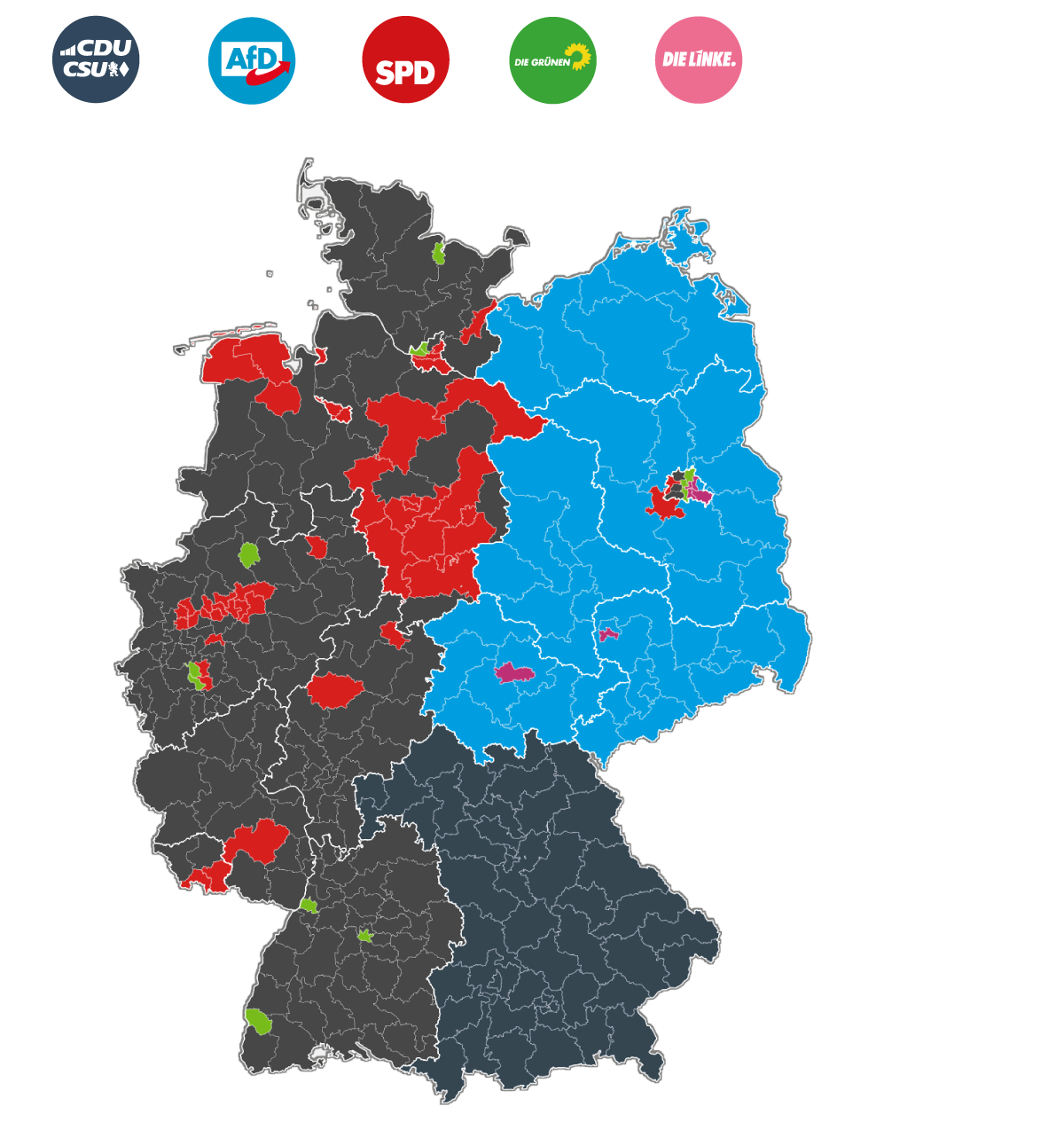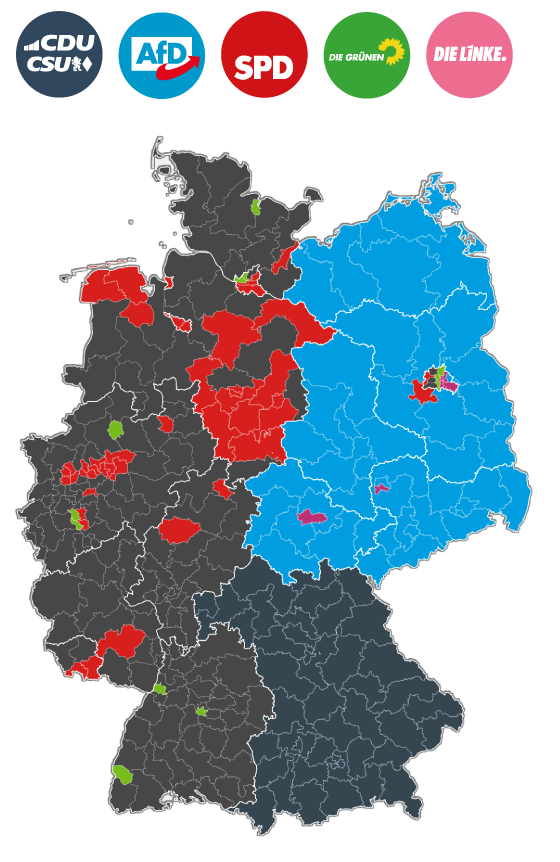The charts that explain the elections in Germany
The blue of the extreme right is expanding and taking over all of East Germany

BarcelonaThis Sunday's elections draw a map of Germany very different from that of four years ago. The decline of Olaf Scholz's Social Democrats (SPD) and the rise of the far-right Alternative for Germany (AfD) are two common facts throughout Germany, but in some places the populist and xenophobic force of Alice Weidel has imposed itself with more than 36% of the 8% of the votes.
The extreme right has not only doubled its percentage of votes and has become the second force at the federal level, but has also expanded its dominance throughout the territory and has established itself as the winning force in almost all of eastern Germany. Of the 299 German electoral districts or constituencies, the conservatives of the CDU-CSU, led by Friedrich Merz, have won 190 and their grey colour now occupies most of the electoral map of the country. The SPD's red has fallen to just 45 districts, one less than the far-right AfD won.
Four years ago, the AfD won 17 electoral districts (concentrated in two states, Thuringia and Sachsen), and in 2025 it won 46 districts, becoming the leading force in three more states. In total, the far-right has won in the five states that make up the former German Democratic Republic (GDR).



